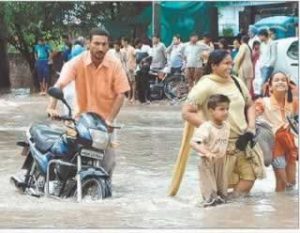Karnataka High Court directs BBMP to ensure Ward Committees prepare Ward Level Solid Waste Management Plan
Bangalore : 10th November 2017
In a historic decision by the Division Bench of Hon’ble High Court of Karnataka consisting of Justice Mr. B.S. Patil and Justice Mrs. B. V.
Nagarathna, Bruhat Bengaluru Mahanagara Palike (BBMP) has been directed to ensure that Ward Committees constituted on 31st October 2017 in all the 198 wards of the city should meet by end of November in accordance with Section13-H of the Karnataka Municipal Corporations Act, 1976. The Court further directed that during this first meeting each and every Ward Committee shall prepare a ward level plan to “ensure proper solid waste management and
sanitation work in the ward and finalise location of new public sanitation
units” as per Sec 13 (I) (i) of the Act. These plans will be consolidated
into an Action Taken Report (ATR) by BBMP and placed on its website, and a
report of progress will be produced in Court prior to the next date of
hearing i.e. 8th December 2017.
The direction assumes critical importance at a time when governance and
management of large metropolitan centres such as Bangalore are in a
perpetual state of crisis. This is a direct consequence of the lack of
decentralization and devolution of power that guarantees direct public
participation in civic matters as per the Constitutional 74th Amendment
(Nagarpalika) Act, 1992. This critical reform initiated 25 years ago with the aim of improving transparency, accountability and efficiency in civic administration has been delayed for
one or the other reason. Comprehending the entire situation and the
prevailing crisis, the High Court issued these directions in response to a
submission made by Mr. Leo F. Saldanha of Environment Support Group in WP
46523/2012 (Environment Support Group & Ors v. Bruhat Bengaluru Mahanagara
Palike & Ors) connected with WP 24739/2012 and other Public Interest Litigations that are
being heard by the Court since July 2012 in tacking the solid waste
management crises).
In an unprecedented initiative, the Court also directed BBMP to prepare a
booklet consisting of all High Court directives, as also specific
provisions of Municipal Solid Waste Management Rules, 2016 and Karnataka
Municipal Corporations Act, 1976 relating to Ward Committee functioning,
and reach that to every Ward Committee within 10 days. The Committees would
then be assisted by BBMP in developing a Ward Level Waste Management Plan
based on micro-plans developed by BBMP, the prevailing reality and inputs
from the public.
The High Court in earlier orders has made Ward Committees responsible to manage waste within their ward limits. In fact in directions issued in November 2012, that Court had held there is no solution to the garbage crisis unless each and every ward would segregate waste at source and manage waste produced within the ward by establishing two wet waste and one dry waste processing centres. This was to ensure that waste would not travel tens of miles to be dumped in quarries or landfills causing havoc in the lives of thousands of villagers,
who are unfortunate victims of the city’s waste.
Mr. Sarfaraz Khan, Jt. Commissioner (SWM and Health) of BBMP submitted that
maximum efforts were invested to ensure segregation and management of waste
at source. However, only 40% of waste segregation has been achieved. While
efforts are on to ensure maximum management of waste by segregation at
source, interim measures demand waste need to be taken to quarries. This is
also because eight waste processing sites that have been established at the
cost of Rs. 450 crores have not been functioning optimally due to various
reasons, including local resistance.
Earlier, Mr. Ajesh Kumar, Counsel for petitioners in WP 24739/2012, brought
to the attention of the Court that several progressive directions issued
for managing solid waste have not been complied with. These directions
require segregation of waste at source and its management in local areas.
As a result, accumulated mixed waste was being dumped in quarry pits in and
around the city resulting in massive environmental and health impacts on
local village communities.
Mrs. Kathyayini Chamaraj of CIVIC Bangalore, who is an impleading applicant
in the PILs, argued that the Ward Committees currently set up have not been
constituted as per the law. The Court felt that such legal objections could
be raised independently. But the Ward Committees now set up must begin
functioning immediately
Press Release Issued by Namrata Kabra, Mallesh K. R. and Harsh Vardhan Bhati
Environment Support Group
